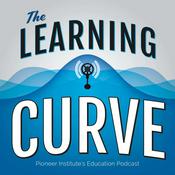100 episodes

Annie Moore, the First Immigrant Through Ellis Island
1/08/2026 | 21 mins.
Ellis Island opened on January 1, 1892, and the first immigrant to be welcomed was Annie Moore, who was either a 15 or 17 year-old Catholic girl from Ireland. She and her younger brothers traveled over from Cobh, County Cork to join their parents who were already in American. Moore went on to marry a German and have a bunch of kids in New York City, contrary to some popular myths. Twelve million immigrants passed through Ellis Island during its 62 years of service, most of them from historically Catholic countries. Ellis Island was the first central immigration point set up by the federal government after nearly 100 years of immigration being controlled by the states.

The Founding of Regina Laudis Abbey: A Story Made for Hollywood
12/23/2025 | 22 mins.
Mother Benedict Duss hid from the Nazis in her French Benedictine monastery during World War II. After General Patton's Third Army liberated her abbey she pledged to return to the United States to establish a Benedictine monastery to pray for and bless her homeland. Through the assistance of two future popes — both of whom would eventually be canonized — and a number of other providential happenstances, the Abbey of Regina Laudis was finally established in Bethlehem, Connecticut. The story of the founding eventually became the basis for the acclaimed movie Come To The Stable, which was nominated for eight Oscars, including for the screenplay written by Clare Booth Luce. Regina Laudis has been the home of Mother Dolores Hart since she left a budding Hollywood acting career in the 1960s, and it was the place where the actress Patricia Neal found solace and healing after her tumultuous life.

Fr. Aloysius Schmitt, Hero of Pearl Harbor
12/11/2025 | 15 mins.
Father Aloysius Schmitt was a Navy Chaplain assigned to the USS Oklahoma at the outset of World War II. He had just finished the 7 a.m. Mass on the Second Sunday of Advent when the first torpedoes from the surprise Japanese attack struck the ship. He aided men to escape, at the cost of his own life during the attack on Pearl Harbor. He was the first chaplain to die in World War II.

Ven. Henriette Delille
11/25/2025 | 16 mins.
Venerable Henriette Delille overcame great opposition to establish the second religious community for black women in the United States. She was an octroon born in New Orleans in 1813. Her mother was a kept woman within the plaçage system. After Henriette learned the truth about marriage she became implacably opposed to the plaçage system, and she rejected the trajectory of her life. In her 20s she started the second religious community for black women, but it took years for the authorities to approve her religious order. Since its founding in the 1840s the community has opened the first Catholic nursing home for the elderly in the United States, as well as one of the oldest Black Catholic high schools in the USA. Henriette Delille died in 1862. Her cause for canonization opened in 1988, and she was declared venerable in 2010.

Pope Night in the American Colonies
11/05/2025 | 17 mins.
"Pope Night" was the American version of the British "Guy Fawkes Night," the annual commemoration of the Gunpowder Plot. The night of mischief and mayhem and anti-Catholic demonstrations came over with sailors and grew to include demonstrations up and down the New England coast. It was ended by George Washington, who had an affinity for Catholics — and who needed Catholic support in the war against Great Britain
More Education podcasts
Trending Education podcasts
About American Catholic History
Listen to American Catholic History, Life Kit and many other podcasts from around the world with the radio.net app

Get the free radio.net app
- Stations and podcasts to bookmark
- Stream via Wi-Fi or Bluetooth
- Supports Carplay & Android Auto
- Many other app features
Get the free radio.net app
- Stations and podcasts to bookmark
- Stream via Wi-Fi or Bluetooth
- Supports Carplay & Android Auto
- Many other app features


American Catholic History
download the app,
start listening.







































